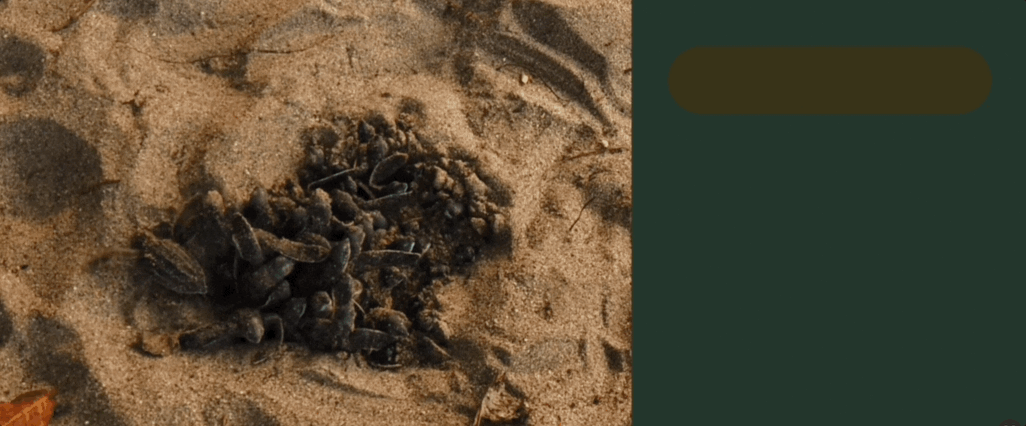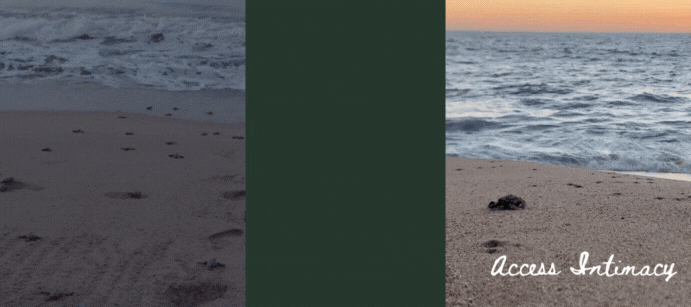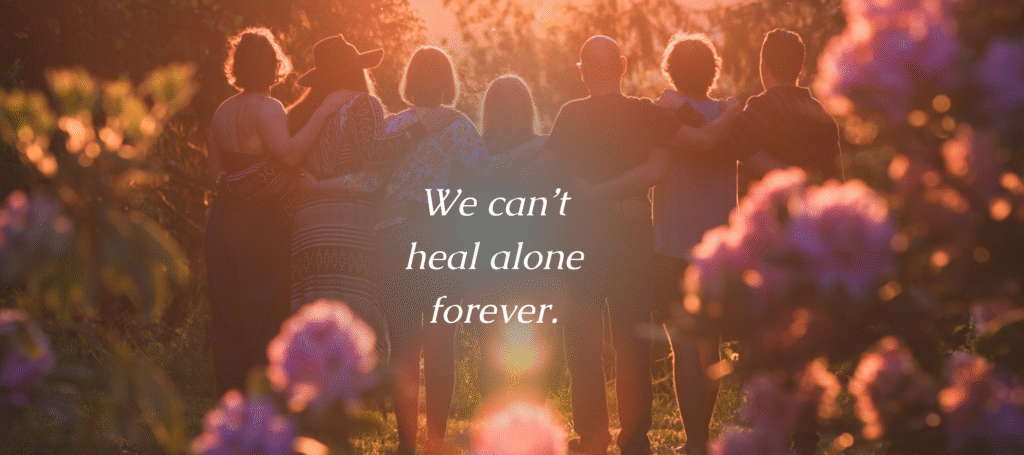As September draws to a close, we’ve heard stories and raised awareness for Deaf Awareness Month and Suicide Prevention Month—themes that are never abstract for me, but deeply personal. Years ago, when exhaustion and suicidal thoughts pressed in, the forest became my sanctuary and led me to a renewed purpose for life- which was to become a guide.
Nature as Therapist—and Diversity Teaches Us Resilience
In my own journey of trying to heal, the forest held me when I couldn’t hold myself. I’ve written about this before: how being in the company of trees was my first act of mental-health care.
This relationship with nature is not a luxury; it’s a practice of survival.
Disabled people, especially those who are queer, Deaf, or otherwise marginalized, have always had to innovate ways of living with disruption—whether from ableism, economic injustice, or the daily unpredictability of our bodies. Disability-justice activist Patty Berne reminds us that in the face of climate or political catastrophe we should “look to queer and disabled folks” for survival wisdom. These are humans who live every day with uncertainty, adapting creatively to bodies and systems that rarely center them. Those skills—creativity, flexibility, interdependence—are exactly what this chaotic world requires.
Diversity is resilience, the way a biodiverse forest weathers storms better than a monoculture.
Access Intimacy: The Cure for Loneliness
What saved me wasn’t just nature, but the recognition that I wasn’t meant to do this alone and I learned that we can’t heal alone forever.
![[image description: Group of people standing shoulder-to-shoulder, arms around each other, watching a warm sunset. Pink flowers frame the foreground. White text overlay reads, ‘We can’t heal alone forever.’ Atmosphere is calm and peaceful"]](https://static.wixstatic.com/media/8afa77_836b4d5864a1463c9e6d423cc92a8504~mv2.png/v1/fill/w_740,h_329,al_c,q_85,usm_0.66_1.00_0.01,enc_avif,quality_auto/8afa77_836b4d5864a1463c9e6d423cc92a8504~mv2.png)
The statistics speak volumes and propelled me to do the work I’m doing as a guide:
- Deaf and Hard of Hearing people are twice as likely to experience mental health issues, including depression and suicidal ideation, compared to hearing peers.
- Disabled and marginalized populations often face systemic barriers to accessing care, which compounds feelings of loneliness and despair.
- Suicide remains a leading cause of death worldwide—and it thrives in disconnection and isolation.
These realities remind us that slowing down and choosing care isn’t just about self-preservation—it’s about survival, and about creating networks of support.
In the Deaf and Disabled communities, we talk about access intimacy—that rare, precious sense of being understood without needing to explain yourself, of being with people who “get it.” (-Mia Mingus)
In this video below, I discussed access intimacy— I share stories from Deaf, DeafBlind, DeafDisabled, and Hard-of-Hearing companions whose insights from experiencing and co-navigating and experiencing relational therapy (aka. Shinrin-yoku or “forest bathing”) with me to deepen this truth. One speaks of how nature invites her to “slow down, feel it, live it … be like a turtle,” releasing the pressure of time. Another highlights how collective pacing in outdoor spaces fosters mutual care.
8. Access Intimacy in Nature: Assessing Care through Direct Experiences
Direct Experience: What feels beautiful?
Perhaps most transformative for me is the wisdom of several DeafBlind leaders in the Protactile movement. Protactile is reshaping how we think about language, culture, and access by centering direct experience. DeafBlind people ask not “How do we make it more accessible?” but “What feels beautiful?”

Author John Lee Clark captures this in Against Access:
“When hearing and sighted people join us, they pick up Protactile and learn how to work and socialize with us in our space. They often find themselves closing their eyes … because sight isn’t necessary. Bodies in contact become as normal to them as they are to us… The Protactile movement is obsessed with direct experience.”
When I work with DeafBlind friends, I often close my eyes and discover a whole new way of sensing nature and human connection—one that can be appreciated, perhaps more deeply, without sight. Years of teaching Deaf Studies and ASL taught me that laws and policies rarely capture this essence. True access isn’t a form, a policy, or a token of inclusion. It is vulnerability, reciprocity, and the courage to be fully present.
Wisdom of the Sea Turtle
Through Deaf Gain, Deaf people teach that Deaf culture is not a loss but an expansion of human possibility. In the woods, I notice how Deaf friends perceive the world—vibrations of a woodpecker through a tree trunk, a hawk’s shadow moving before the sound reaches us.
These ways of sensing are not just different; they are essential knowledge for a time when listening to the planet means more than hearing.
This is why our Sea Turtle Cohort exists. Sea turtles teach us how to rise together.

When hatchlings break through the sand, they head toward the ocean as a group. Interdependently, each finds its own rhythm, yet no one is left behind. Predators, waves, and moonlight all play their parts, but the hatchlings keep moving together—an embodied lesson in interdependence and persistence.

Beginning October 1, we’ll follow that wisdom: slowing down, sharing silence, and practicing access intimacy in the forest and with each other. We rise not in isolation but in community—like sea turtles finding the ocean by moonlight. 🌊🐢
Join us or book a Discovery Call to journey together.
I’ll close with a vision from disability-justice thinker Mia Mingus:
“I imagine a world where our organizing and activism is less segregated, where our movements and communities are accessible and don’t participate in the isolation of disabled communities. I imagine places where we fight for whole and connected people, families and communities.”
Let’s build that world—one slow, interdependent step, or crawl, at a time.
-Summer Crider, The Wild Cypress, Inc. Making Healing Accessible. www.thewildcypress.com/sea-turtle
![[image: Summer is standing in a dense forest, wearing a red tank top and khaki shorts. They are looking to their left, a calm smile on their face. Sunlight is streaming through.]](https://static.wixstatic.com/media/8afa77_2fb2f2c1341a4c4d860e36fa9ac8bd1c~mv2.gif)

